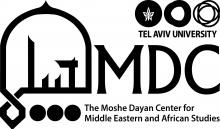“Berbers” is the generally accepted term for the indigenous peoples of the Maghrib (in North Africa west of the Nile Valley), going back to the beginning of recorded history. Ethnically, linguistically, and culturally, Berbers form the basis of “the whole North African edifice” (Hart 1999: 26). The term, derived from the Greek bárbaros (barbarian), was embraced by the Arab Islamic conquerors of North Africa in the seventh century and revived by French colonialism in the nineteenth century. It is viewed as pejorative by the modern Berber identity movement and hence is increasingly being supplanted by “Amazigh” (free man). Berbers speak in a variety of dialects of what is generally accepted to be a common language, Tamazight, which belongs to the family of Afro-Asiatic languages. Until recent decades, it has been an almost exclusively oral language, but efforts to standardize and develop it as a written language are well underway.
Prof. Bruce Maddy-Weitzman has published an article on the Amazigh (Berber) people of the Maghrib, in the Wiley Blackwell Encyclopedia of Race, Ethnicity, and Nationalism.








